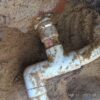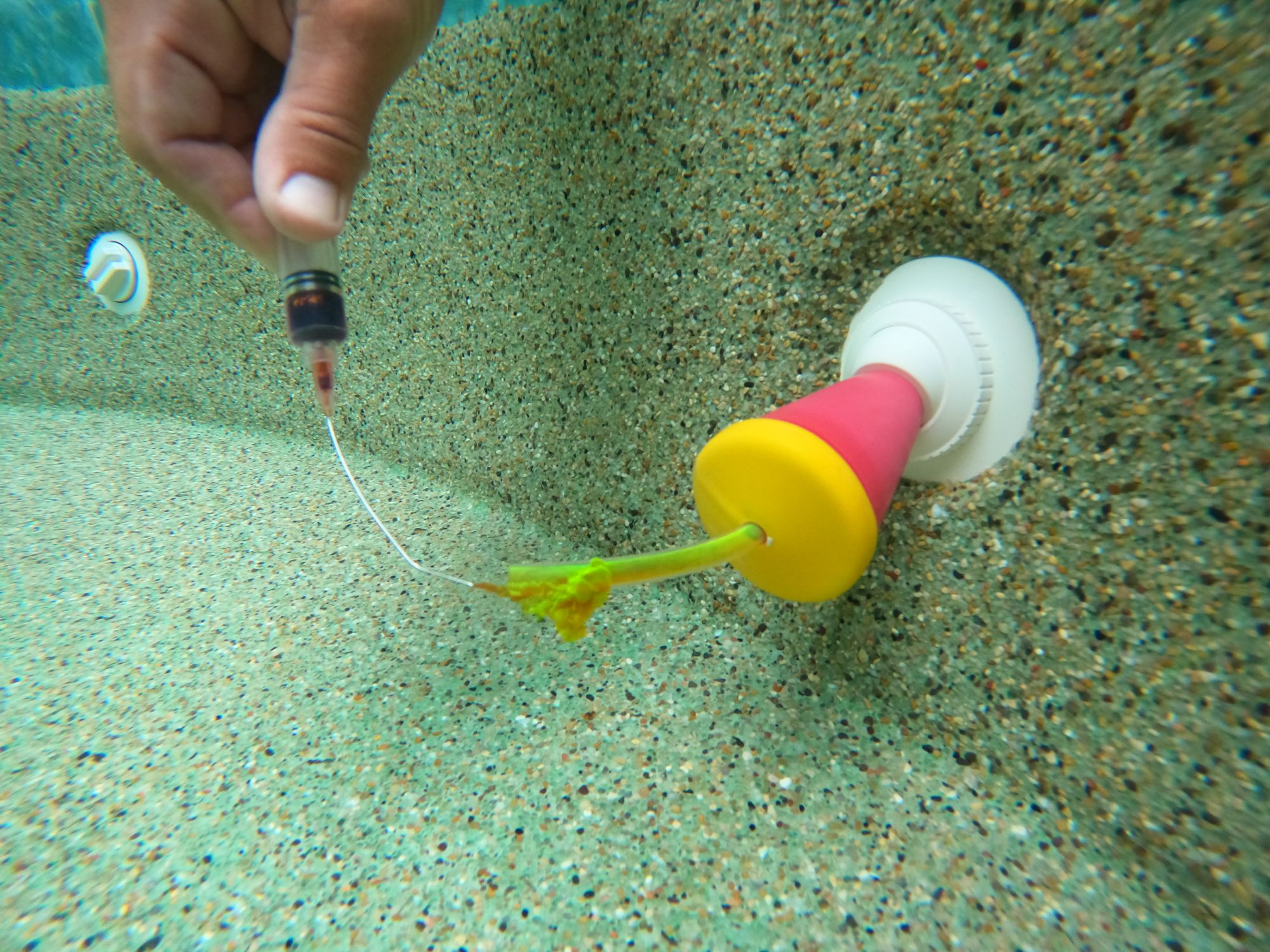Can A Swimming Pool Leak Cause A Sinkhole?
Welcome to our comprehensive exploration of the fascinating world of swimming pool leaks and their potential connection to sinkholes. In this guide, we’ll dive deep into the nature and characteristics of sinkholes, exploring how they form and the indicators to watch out for. We’ll also examine the broader impacts of water leaks, beyond sinkholes, including structural damage and mold infestation, highlighting the urgency of timely responses to leaks.
One of the key focuses of our discussion will be on the intriguing link between pool leaks and sinkholes. We’ll uncover the mechanisms through which pool leaks can contribute to sinkhole formation, emphasizing the importance of early detection and intervention, particularly in regions vulnerable to sinkholes.
Furthermore, we’ll explore the various causes of pool leaks and the risk factors associated with different pool types, such as vinyl, fiberglass, and concrete pools. We’ll also delve into practical aspects of leak management, including safety measures, professional detection services, and insurance considerations.
Throughout this guide, we aim to address common concerns related to pool leaks and water management, providing insights into repair options, costs, and challenges in detection. Our ultimate goal is to underscore the importance of vigilant leak detection and management in safeguarding against the risks posed by pool leaks, affirming their potential as triggers for sinkholes. So, let’s jump in and uncover the secrets of swimming pool leaks!
Sinkholes: Nature and Characteristics
Sinkholes are geological phenomena characterized by sudden collapses or depressions in the Earth’s surface. They can vary greatly in size, from small holes to large chasms, and are typically formed when underground voids or cavities collapse due to the dissolution of soluble rocks like limestone, gypsum, or salt.
The formation of sinkholes can be influenced by various factors, including natural processes like erosion, groundwater movement, and the dissolution of underlying rock layers by acidic water. Human activities such as mining, construction, and groundwater extraction can also contribute to sinkhole formation by altering the natural equilibrium of the subsurface.
Sinkholes can occur gradually over time or suddenly without warning, posing significant risks to property and safety. They are often associated with regions where soluble bedrock is prevalent, such as limestone-rich areas, but can occur in various geological settings around the world.
Sinkholes exhibit distinct characteristics, including steep-sided walls, collapsed or subsided ground surfaces, and the potential to engulf nearby structures or vegetation. They may also be accompanied by features like disappearing streams or ponds, as water drains into the underground voids.
Overall, sinkholes are dynamic and complex geological features that highlight the ongoing processes of erosion and landscape evolution on our planet. Understanding their nature and characteristics is essential for mitigating risks and managing their impacts on human communities and infrastructure.
Potential Link between Pool Leaks and Sinkholes
The connection between swimming pool leaks and sinkholes is rooted in the intricate interplay between water infiltration, underground erosion, and geological processes. When a swimming pool develops leaks, whether from damaged liners, faulty plumbing, or other sources, water is introduced into the surrounding soil and subsurface environment.
In regions with soluble bedrock, such as limestone, gypsum, or salt deposits, this infiltrating water can initiate a cascade of chemical reactions and physical processes. Over time, the water interacts with the soluble minerals present in the rock, gradually dissolving them and creating voids or cavities beneath the surface.
As these voids grow larger, they compromise the integrity of the overlying soil and rock layers. Eventually, the weight of the soil and structures above becomes unsustainable, leading to sudden collapse and the formation of sinkholes. The continuous flow of water from swimming pool leaks can accelerate this process, exacerbating erosion and enlarging the underground voids.
Furthermore, the presence of underground plumbing associated with swimming pools can compound the risk of sinkhole formation. Leaks in pool plumbing systems introduce concentrated streams of water into the ground, which can intensify erosion around the pipe pathways and contribute to the enlargement of subsurface voids.
Although the direct causative link between swimming pool leaks and sinkholes may not always be immediately apparent, the cumulative effects of water infiltration and underground erosion highlight the potential for a significant impact. Therefore, addressing and repairing swimming pool leaks in a timely manner is crucial for minimizing the risk of sinkhole formation and safeguarding property and safety. Proactive leak detection and repair measures not only protect against structural damage but also help mitigate the broader geological risks associated with sinkholes.
Sinkhole Formation
Sinkholes are geological features that form as a result of various factors, including natural processes and human activities. This section delves into the causes of sinkholes, highlighting the role of factors such as erosion, dissolution of soluble rocks, and changes in groundwater levels. It explores how sinkholes can rapidly expand and develop, posing significant risks to infrastructure and safety. Additionally, indicators and warning signs of impending sinkhole formation are discussed, emphasizing the importance of proactive monitoring and response to mitigate potential hazards.
Causes of Sinkholes
Sinkholes can be attributed to a variety of natural and anthropogenic factors, each contributing to the complex processes that lead to their formation.
Natural Causes:
- Dissolution of Soluble Rocks
- One of the primary natural causes of sinkholes is the dissolution of soluble rocks such as limestone, gypsum, and salt. These rocks are susceptible to chemical weathering by acidic groundwater, gradually eroding and creating voids underground. Over time, the continuous dissolution of these rocks can lead to the collapse of the surface and the formation of sinkholes.
- Erosion
- Erosion, both by surface water and groundwater, plays a significant role in the development of sinkholes. As water flows over the land surface, it can carry away sediment and gradually wear down the underlying rock layers. Similarly, groundwater movement can erode soluble rocks from within, enlarging existing voids and creating conditions conducive to sinkhole formation.
- Changes in Water Levels
- Fluctuations in groundwater levels can also contribute to sinkhole formation. Periods of heavy rainfall or excessive groundwater extraction can increase water infiltration into the subsurface, accelerating the dissolution of soluble rocks and enlarging underground voids. Conversely, prolonged droughts or reduced groundwater recharge can lead to the drying out of underground caverns, weakening the stability of the overlying soil and predisposing it to collapse.
Anthropogenic Causes:
- Mining Activities
- The excavation of underground minerals, such as coal, salt, or phosphate, can create voids in the subsurface, increasing the likelihood of sinkhole formation. Abandoned mines, in particular, pose a significant risk as the collapse of underground chambers can propagate upwards, causing surface depressions or collapses.
- Construction and Development
- Human activities associated with construction and development can also contribute to sinkhole formation. Excavation for building foundations or infrastructure projects can disturb the natural equilibrium of the subsurface, altering groundwater flow patterns and destabilizing underlying rock formations. Additionally, improper disposal of waste or excessive groundwater extraction can further exacerbate the risk of sinkhole formation in urban areas.
Understanding the diverse array of natural and anthropogenic causes of sinkholes is essential for effective risk assessment and mitigation strategies. By addressing underlying factors such as geological conditions, water management practices, and land use decisions, it is possible to minimize the potential for sinkhole formation and mitigate the associated hazards to communities and infrastructure.
Rapid Expansion and Development
Sinkholes are characterized by their potential for sudden and rapid expansion, posing significant risks to both property and safety. This section explores the underlying processes that contribute to the rapid development of sinkholes once they are initiated.
Erosion and Dissolution
- Sinkholes typically form in areas where soluble rocks, such as limestone, gypsum, or salt, are present beneath the surface. These rocks are susceptible to dissolution by acidic groundwater, leading to the gradual enlargement of underground voids. As the voids expand, they weaken the overlying soil and rock layers, increasing the risk of collapse.
Collapse Mechanisms
- Sinkhole formation often occurs through one of two primary collapse mechanisms: cover-collapse sinkholes and cover-subsidence sinkholes. Cover-collapse sinkholes are characterized by the sudden collapse of surface material into an underlying void, resulting in a distinctive bowl-shaped depression. This type of sinkhole can develop rapidly, with the collapse occurring suddenly and without warning.
Cover-subsidence sinkholes, on the other hand, develop more gradually as the overlying soil gradually subsides into underlying voids. While not as abrupt as cover-collapse sinkholes, cover-subsidence sinkholes can still pose significant risks, particularly if they occur beneath structures or infrastructure.
Triggering Events
- Sinkhole development can be triggered by various factors, including heavy rainfall, changes in groundwater levels, or anthropogenic activities. Prolonged periods of rainfall can increase water infiltration into the subsurface, accelerating the dissolution of soluble rocks and enlarging underground voids. Similarly, changes in groundwater levels, whether due to natural fluctuations or human activities such as groundwater extraction, can destabilize underground caverns and increase the risk of collapse.
Subsurface Conditions
- The underlying geological and hydrological conditions play a crucial role in determining the rate and extent of sinkhole development. Regions with soluble bedrock and extensive karst landscapes are particularly susceptible to rapid sinkhole formation due to the prevalence of underground voids and channels. Additionally, the presence of clay or other impermeable layers in the subsurface can inhibit water drainage, leading to the accumulation of groundwater and increasing the likelihood of sinkhole development.
The rapid expansion and development of sinkholes are driven by a combination of erosional processes, collapse mechanisms, triggering events, and subsurface conditions. Understanding these factors is essential for assessing the potential risks posed by sinkholes and implementing appropriate mitigation measures to protect property and ensure public safety.
Indicators and Warning Signs
Sinkholes often present subtle but identifiable indicators and warning signs before they manifest as visible depressions or collapses in the landscape. Recognizing these signs is crucial for early detection and mitigation of sinkhole hazards. Below are some key indicators and warning signs to be aware of:
Depressions or Small Pits
One of the early indicators of sinkhole formation is the presence of depressions or small pits in the ground surface. These may initially appear as shallow indentations or slight depressions, often mistaken for natural irregularities in the terrain. However, these subtle surface features can indicate the presence of underlying voids or caverns that are susceptible to collapse.
Cracks in the Ground or Pavement
Cracks in the ground or pavement, particularly if they appear suddenly or extend over a significant distance, can be indicative of subsurface instability. These cracks may result from the gradual settling of the ground as underlying voids expand or from the localized collapse of soil and rock layers. Monitoring the size and extent of these cracks can provide valuable insight into the progression of sinkhole formation.
Tilting or Slumping Structures
Sinkhole activity beneath the surface can cause structures, such as buildings, fences, or utility poles, to tilt or slump as the ground beneath them subsides. This can manifest as uneven or sloping floors, leaning walls, or misaligned doors and windows. Observing changes in the alignment or stability of structures can serve as a warning sign of subsurface instability and impending sinkhole formation.
Disappearing Surface Water
Sinkholes can act as natural drainage features, diverting surface water underground and causing streams, ponds, or lakes to disappear suddenly. This phenomenon, known as “losing streams” or “sinking ponds,” occurs when water flows into subsurface voids, bypassing the surface drainage network. Monitoring changes in surface water flow patterns can help identify areas prone to sinkhole formation.
Unexplained Soil Subsidence
Unexplained soil subsidence, where the ground surface gradually sinks or settles without apparent cause, can be indicative of underlying sinkhole activity. This subsidence may occur gradually over time or suddenly and can lead to localized depressions or collapses in the landscape. Conducting regular surveys of the terrain and monitoring changes in elevation can help detect subtle signs of subsurface instability.
Vegetation Changes
Changes in vegetation, such as wilting or sudden die-off of trees and plants, can occur as a result of sinkhole activity. The loss of vegetation may be attributed to changes in soil moisture levels, nutrient availability, or root damage caused by subsurface movement. Observing changes in the health and appearance of vegetation can provide valuable clues to underlying sinkhole hazards.
Recognizing the indicators and warning signs of sinkholes is essential for early detection and mitigation of potential hazards. By remaining vigilant and proactive in monitoring changes in the landscape, property owners and communities can take steps to protect against the risks posed by sinkhole formation.
Impacts of Water Leaks
The impacts of water leaks extend far beyond the formation of sinkholes, encompassing a diverse range of consequences affecting both property and the environment. Firstly, water leaks contribute to the depletion of valuable freshwater supplies, exacerbating water scarcity and drought conditions in communities. Moreover, increased water bills and utility costs place financial strain on property owners, leading to economic losses. The substantial costs associated with repairing damage caused by leaks, including structural repairs and mold remediation, further compound these financial burdens, often not covered by insurance.
Structurally, water leaks compromise building integrity, leading to deterioration of materials such as wood, drywall, and concrete. This deterioration can result in structural instability and safety hazards for occupants, potentially leading to collapses and endangering lives. Additionally, the ideal conditions created by water leaks foster rapid mold growth, posing health risks to occupants and further damaging building materials and interior furnishings.
Environmental impacts of water leaks include soil erosion, groundwater contamination, and habitat destruction, with leaking water destabilizing slopes and infiltrating groundwater supplies. Contaminants from leaks can pose risks to human health and ecosystems, emphasizing the urgent need for prompt leak detection and repair.
Addressing water leaks promptly is crucial to mitigate these diverse consequences, as delays can exacerbate damage, increase repair costs, and prolong disruptions. Immediate response helps prevent mold growth, minimize structural damage, and reduce financial losses associated with repair and restoration. By prioritizing prompt action, property owners can protect their investments, safeguard occupants’ health and safety, and mitigate the environmental impacts of water leakage.
Diverse Consequences Beyond Sinkholes
While sinkholes are among the most alarming consequences of water leaks, the impacts extend far beyond these geological phenomena. Water leaks can lead to a diverse range of consequences that affect both property and the environment. One significant consequence is the depletion of water resources, as leaks result in the wastage of valuable freshwater supplies. This can have far-reaching implications for communities, particularly in regions facing water scarcity or drought conditions.
Additionally, water leaks contribute to increased water bills and utility costs for property owners, leading to financial strain and economic losses. The cost of repairing damage caused by leaks, including structural repairs, mold remediation, and water damage restoration, can be substantial and may not always be covered by insurance.
Furthermore, water leaks can compromise the integrity of building foundations, leading to structural instability and safety hazards for occupants. In extreme cases, prolonged water leaks can result in the collapse of walls, ceilings, or entire structures, posing significant risks to life and property.
Environmental impacts of water leaks include soil erosion, groundwater contamination, and habitat destruction. Leaking water can erode soil and destabilize slopes, increasing the risk of landslides and erosion-related disasters. Contaminants from leaking pipes or sewage systems can infiltrate groundwater supplies, posing risks to human health and ecosystems.
In summary, the consequences of water leaks extend beyond sinkhole formation and can have far-reaching impacts on water resources, finances, infrastructure, and the environment. Addressing water leaks promptly and effectively is essential to mitigate these diverse consequences and protect communities from the risks associated with water leakage.
Structural Damage and Mold Infestation
Water leaks pose significant risks to the structural integrity of buildings and can result in extensive damage to various building components. One of the most common forms of damage caused by water leaks is structural deterioration, which can weaken building materials such as wood, drywall, and concrete. Prolonged exposure to moisture can lead to rotting, warping, and decay of structural elements, compromising the stability of the building.
Additionally, water leaks create ideal conditions for mold growth, which can proliferate rapidly in damp, humid environments. Mold infestation not only damages building materials but also poses serious health risks to occupants. Exposure to mold spores can trigger allergic reactions, respiratory problems, and other adverse health effects, particularly in individuals with pre-existing respiratory conditions or compromised immune systems.
Water leaks can also damage interior finishes and furnishings, including flooring, carpets, furniture, and personal belongings. Staining, discoloration, and water marks are common indicators of water damage, which can diminish the aesthetic appeal of interior spaces and reduce property value.
Moreover, water leaks increase the risk of electrical hazards, as moisture can seep into electrical wiring, outlets, and appliances, causing short circuits, fires, and electrocution hazards. Addressing water leaks promptly and thoroughly is essential to prevent further damage and mitigate the risks associated with structural damage, mold infestation, and electrical hazards.
Importance of Prompt Response to Water Leaks
Prompt response to water leaks is critical to minimize damage, mitigate risks, and protect property and occupants from the adverse effects of water damage. Delayed or inadequate response to water leaks can exacerbate damage, increase repair costs, and prolong disruptions to daily activities.
One of the most important reasons for prompt response to water leaks is to prevent the spread of moisture and mold growth. Mold can begin to proliferate within as little as 24 to 48 hours of water intrusion, posing serious health risks to occupants and causing extensive damage to building materials. By addressing water leaks promptly, property owners can prevent mold growth and mitigate the associated health and safety hazards.
Additionally, prompt response to water leaks can help minimize structural damage to buildings and prevent further deterioration of building materials. Timely detection and repair of leaks can prevent moisture from compromising the integrity of structural elements such as walls, floors, and ceilings, reducing the risk of structural instability and collapse.
Furthermore, addressing water leaks promptly can help minimize financial losses associated with water damage and repair costs. Water damage restoration can be costly and time-consuming, particularly if extensive damage has occurred. By taking immediate action to address water leaks, property owners can minimize the extent of damage and reduce repair costs.
Overall, the importance of prompt response to water leaks cannot be overstated. Property owners should be vigilant in monitoring for signs of water leaks and take immediate action to address leaks as soon as they are detected. By doing so, property owners can protect their investments, safeguard the health and safety of occupants, and minimize the financial and emotional toll of water damage.
Connection Between Pool Leaks and Sinkholes
Now let’s investigate the unexpected correlation between pool leaks and the formation of sinkholes. It explores how the gradual seepage of water from pool leaks can erode underlying soil and rock layers, eventually leading to the collapse of the ground surface and the creation of sinkholes. This section emphasizes the importance of early detection and intervention to prevent potential sinkhole formation, while also considering regional factors that may exacerbate the risk. By understanding this connection, property owners can take proactive measures to address pool leaks and safeguard against the emergence of sinkholes, thus ensuring the safety and stability of their surroundings.
Mechanism of Sinkhole Formation from Pool Leaks
The mechanism through which pool leaks contribute to the formation of sinkholes is rooted in the intricate interaction between water, soil, and underlying geological formations. When a pool develops a leak, water begins to escape from the confines of the pool structure, seeping into the surrounding soil. This infiltrating water gradually percolates through the soil layers, eventually reaching underlying geological substrates, which may include soluble rock formations such as limestone, gypsum, or salt beds.
As water permeates through the soil, it carries with it dissolved minerals and compounds, gradually weakening the integrity of the soil matrix. In regions where soluble rock formations are present, this infiltrating water can further exacerbate the process of dissolution. Over time, the continuous flow of water dissolves minerals within the rock, creating voids and cavities beneath the surface.
As these voids enlarge, the overlying soil and rock layers become increasingly unsupported, leading to subsidence and eventual collapse. The result is the formation of a sinkhole, as the surface layer collapses into the void created by the dissolution of underlying geological materials. The process may be gradual, with sinkholes developing over an extended period, or it can occur suddenly, particularly if the underlying dissolution has weakened the soil and rock layers to the point of instability.
Several factors influence the rate and extent of sinkhole formation from pool leaks, including the volume and duration of the leak, the composition of the soil and underlying geological formations, and the hydrogeological conditions of the area. Additionally, human activities such as groundwater extraction or construction practices can further exacerbate sinkhole vulnerabilities.
Understanding the complex interplay between pool leaks and sinkhole formation is crucial for effective risk management and mitigation strategies. By recognizing the underlying mechanisms at play, property owners can take proactive measures to detect and address pool leaks promptly, minimizing the risk of sinkhole formation and safeguarding the integrity of their properties.
Importance of Early Detection and Intervention
Early detection and intervention are paramount in mitigating the risks associated with sinkhole formation resulting from pool leaks. Timely identification and response to pool leaks can prevent or minimize the extent of soil erosion, subsurface dissolution, and ultimately, sinkhole development.
Minimizing Structural Damage
- Detecting pool leaks early allows property owners to address the underlying issue before significant structural damage occurs. Water infiltration into the soil surrounding the pool can compromise the stability of nearby structures, such as buildings, retaining walls, or pavement. Early intervention can prevent soil erosion and subsidence, reducing the risk of structural instability and collapse.
Preventing Soil Erosion
- Pool leaks can lead to the gradual erosion of soil surrounding the pool area, particularly in regions with soluble geological formations. As water infiltrates the soil, it carries away soil particles and dissolved minerals, creating voids and cavities beneath the surface. Early detection of pool leaks enables property owners to implement measures to prevent further soil erosion, such as repairing leaks, redirecting drainage, or stabilizing the soil.
Mitigating Sinkhole Formation
- By addressing pool leaks promptly, property owners can interrupt the process of subsurface dissolution and reduce the likelihood of sinkhole formation. Sinkholes develop when underlying geological materials are weakened and collapse under the weight of overlying soil and rock layers. Early intervention can stabilize the soil and prevent the enlargement of voids, minimizing the risk of sudden sinkhole collapse.
Protecting Property and Occupants
- Prompt detection and repair of pool leaks help protect property and occupants from the potential hazards associated with sinkhole formation. Sinkholes can pose significant risks to structures, infrastructure, and human safety. Early intervention mitigates these risks, ensuring the integrity of the property and the safety of its occupants.
Cost Savings
- Early detection and intervention can result in cost savings for property owners by preventing extensive damage and costly repairs. Addressing pool leaks promptly reduces the need for expensive remediation measures and minimizes the financial burden associated with sinkhole formation and structural damage.
In summary, early detection and intervention are essential for mitigating the risks associated with sinkhole formation resulting from pool leaks. By promptly identifying and addressing leaks, property owners can minimize structural damage, prevent soil erosion, mitigate sinkhole formation, protect property and occupants, and realize cost savings in the long run.
Regional Vulnerabilities to Sinkholes
Understanding regional vulnerabilities to sinkholes is crucial for assessing the risk posed by pool leaks and implementing appropriate mitigation measures. While sinkholes can occur in various geological settings, certain regions are particularly prone to sinkhole formation due to underlying geological conditions, hydrogeological factors, and human activities.
Geological Factors
- Regions with soluble geological formations, such as limestone, gypsum, or salt beds, are more susceptible to sinkhole formation. These formations are prone to dissolution by groundwater, resulting in the development of voids and cavities beneath the surface. In areas where such formations are widespread, the risk of sinkhole formation from pool leaks is heightened.
Hydrogeological Conditions
- Hydrogeological conditions play a significant role in sinkhole formation, as groundwater movement can accelerate the dissolution of soluble rock formations. Regions with high groundwater levels or rapid groundwater flow rates are more susceptible to sinkhole development, as groundwater serves as a conduit for the transport of dissolved minerals and compounds. Additionally, changes in groundwater levels due to factors such as drought, heavy rainfall, or groundwater pumping can influence the likelihood of sinkhole formation.
Human Activities
- Human activities can exacerbate sinkhole vulnerabilities by altering natural hydrogeological processes or exacerbating soil erosion. Groundwater extraction, land development, construction activities, and improper disposal of wastewater can all contribute to sinkhole formation by disturbing the natural balance of groundwater flow and soil stability. For example, the construction of impervious surfaces such as roads, parking lots, or buildings can alter surface water drainage patterns, leading to increased infiltration and soil erosion around pools.
Historical Sinkhole Activity
- Regions with a history of sinkhole activity are at increased risk of future sinkhole formation. Past sinkhole occurrences can indicate areas of geological instability or underlying weaknesses in the subsurface. Property owners in regions with a history of sinkhole activity should be particularly vigilant in monitoring for signs of pool leaks and implementing appropriate mitigation measures to reduce the risk of sinkhole formation.
Regulatory Measures
- Some regions have implemented regulatory measures to address sinkhole vulnerabilities and mitigate the risks associated with sinkhole formation. These measures may include land-use planning regulations, building codes, and sinkhole vulnerability assessments. Property owners in regions with stringent regulatory requirements should ensure compliance with applicable regulations and take proactive measures to minimize the risk of sinkhole formation from pool leaks.
In conclusion, regional vulnerabilities to sinkholes are influenced by geological factors, hydrogeological conditions, human activities, historical sinkhole activity, and regulatory measures. Property owners should assess the sinkhole risk in their region and implement appropriate mitigation measures to reduce the likelihood of sinkhole formation resulting from pool leaks. Vigilance, proactive monitoring, and compliance with regulatory requirements are essential for minimizing the risk of sinkhole-related hazards.
Causes of Pool Leaks
Various Factors Contributing to Pool Leaks
Pool leaks can be caused by a variety of factors, ranging from natural wear and tear to structural defects. Understanding these factors is essential for effectively diagnosing and addressing pool leaks. Some common contributors to pool leaks include:
- Wear and Tear
- Over time, the materials used in pool construction, such as vinyl liners, fiberglass shells, or concrete surfaces, may degrade due to exposure to harsh chemicals, UV radiation, and fluctuations in temperature. This wear and tear can weaken the integrity of the pool structure and lead to leaks.
- Ground Movement
- Shifting soil or ground movement can exert pressure on the pool structure, causing cracks or fractures that allow water to escape. This can occur due to geological factors, such as soil erosion, earthquakes, or subsidence, as well as human activities like excavation or landscaping.
- Plumbing Issues
- Problems with the pool’s plumbing system, such as damaged pipes, fittings, or seals, can result in leaks. Common plumbing issues include corrosion, joint failures, and improper installation, which can compromise the watertightness of the system and lead to water loss.
- Equipment Malfunction
- Malfunctioning pool equipment, such as pumps, filters, or valves, can contribute to leaks by disrupting the circulation and filtration of water. Issues like cracked pump housings, worn seals, or faulty gaskets can allow water to escape from the system.
- Structural Defects
- Poor construction practices, inadequate waterproofing, or design flaws can result in structural defects that make the pool vulnerable to leaks. These defects may include improper sealing of joints, insufficient reinforcement, or inadequate slope grading, which can compromise the integrity of the pool structure.
- Environmental Factors
- Environmental factors, such as tree roots, animal burrowing, or abrasive debris, can damage pool surfaces and plumbing components, leading to leaks. Additionally, extreme weather events, such as heavy rainfall or freezing temperatures, can exacerbate existing vulnerabilities and cause leaks to develop.
Addressing pool leaks requires a comprehensive understanding of the various factors that can contribute to their occurrence. By identifying and addressing the root causes of pool leaks, property owners can prevent further damage and ensure the long-term integrity of their pool structures.
Risk Factors for Different Pool Types: Vinyl, Fiberglass, Concrete
The risk of pool leaks can vary depending on the type of pool construction material used. Each type of pool – vinyl, fiberglass, and concrete – presents unique risk factors that property owners should be aware of:
- Vinyl Pools
- Vinyl pools are susceptible to leaks due to tears, punctures, or deterioration of the vinyl liner. Sharp objects, such as rocks or pool accessories, can cause tears in the liner, while exposure to sunlight and chemicals can accelerate degradation. Additionally, improper installation or inadequate maintenance can increase the risk of leaks in vinyl pools.
- Fiberglass Pools
- Fiberglass pools are generally less prone to leaks compared to vinyl or concrete pools due to their one-piece construction and durable fiberglass material. However, fiberglass pools can still develop leaks from cracks or fractures in the laminate shell, particularly if the pool is subjected to ground movement or structural stress. Proper installation and maintenance are essential for minimizing the risk of leaks in fiberglass pools.
- Concrete Pools
- Concrete pools are the most susceptible to leaks due to the porous nature of concrete and the potential for structural cracks. Concrete pools may develop leaks over time as a result of shrinkage, settling, or ground movement. Additionally, corrosion of steel reinforcement, deterioration of waterproofing materials, and inadequate maintenance can contribute to leaks in concrete pools.
Property owners should assess the risk factors associated with their specific pool type and take proactive measures to prevent leaks. Regular inspections, proper maintenance, and timely repairs are essential for preserving the integrity of all pool types and minimizing the risk of leaks.
Sinkhole Management
As sinkholes pose significant risks to property and safety, effective management strategies are essential for mitigating these hazards and protecting communities. In this section, we will delve into sinkhole management, exploring safety measures upon the discovery of sinkholes, the importance of professional leak detection, and considerations related to insurance coverage and budgeting. By understanding how to effectively manage sinkholes, property owners can take proactive steps to minimize risks and ensure the safety and stability of their surroundings.
Safety Measures upon Discovery of Sinkholes
- Evacuation
- The safety of individuals in the vicinity of a sinkhole is paramount. Upon discovery of a sinkhole, immediate evacuation of the area should be conducted to prevent any potential harm to people or property.
- Securing the Area
- Once evacuated, it’s essential to secure the perimeter of the sinkhole to prevent unauthorized access. Fencing or barricades should be erected around the sinkhole to keep people and vehicles away from the danger zone.
- Warning Signs
- Install warning signs in the vicinity of the sinkhole to alert passersby of the hazard. These signs should convey the danger of the sinkhole and advise individuals to stay away from the area.
- Monitoring
- Continuously monitor the sinkhole for any changes in size or stability. This may involve regular visual inspections or the use of monitoring equipment to track ground movement and potential expansion of the sinkhole.
Importance of Professional Leak Detection
- Accuracy
- Professional leak detection services utilize specialized equipment and techniques to accurately identify the source of leaks. This ensures that leaks are detected promptly and accurately, minimizing the risk of further damage or complications.
- Comprehensive Inspection
- Professional leak detection technicians conduct thorough inspections of the property’s plumbing system to identify any potential leaks or vulnerabilities. This includes both visible and concealed components of the plumbing network, such as pipes, fittings, and fixtures.
- Prevention of Damage
- Early detection of leaks allows for timely repairs, preventing water damage to property and infrastructure. By addressing leaks promptly, property owners can avoid costly repairs and mitigate the risk of structural damage or mold growth.
- Peace of Mind
- Engaging professional leak detection services provides peace of mind to property owners, knowing that their plumbing system is being thoroughly inspected and any leaks are being promptly addressed by qualified technicians.
Insurance Coverage and Budgeting Considerations
- Review Insurance Policies
- Property owners should review their insurance policies to understand the extent of coverage for sinkhole-related damages. This includes coverage for property damage, structural repairs, and liability protection in the event of sinkhole-related incidents.
- Sinkhole Endorsements
- Some insurance policies may require additional endorsements or riders to provide coverage for sinkhole-related damages. Property owners should ensure that their insurance policy includes adequate coverage for sinkholes and related risks.
- Budgeting for Repairs
- Property owners should budget for potential sinkhole-related repairs and mitigation measures. This includes setting aside funds for sinkhole remediation, structural repairs, and any necessary safety improvements to the property.
- Consultation with Insurance Providers
- Property owners should consult with their insurance providers to discuss coverage options and ensure that they have adequate protection against sinkhole-related risks. This may involve reviewing policy terms, coverage limits, and deductible amounts to ensure comprehensive insurance coverage.
Addressing Pool Leak Concerns
Detecting and repairing pool leaks is essential for maintaining the integrity of the pool structure and preventing water loss. There are various options available for addressing pool leak concerns, each with its own costs and considerations.
Repair Options for Pool Leaks
- DIY Patching: For minor leaks in vinyl or fiberglass pools, DIY patching kits are available to temporarily seal the leak. These kits typically include adhesive patches or sealants that can be applied to the affected area to stop the leak temporarily.
- Professional Leak Detection
- Engaging professional leak detection services is recommended for accurately identifying the source of leaks and determining the most appropriate repair method. Professional technicians use specialized equipment and techniques to locate leaks in the pool structure and plumbing system.
- Structural Repairs
- Depending on the severity of the leak and the extent of damage to the pool structure, structural repairs may be necessary to restore the integrity of the pool. This may involve patching cracks, replacing damaged components, or reinforcing weak areas of the pool.
Costs and Considerations for Leak Repairs
- Cost Factors
- The cost of leak repairs can vary depending on factors such as the type and extent of damage, the repair method used, and the accessibility of the leak. DIY patching kits are relatively inexpensive, while professional leak detection and structural repairs can be more costly.
- Budgeting Considerations
- Property owners should budget for leak repairs based on the estimated cost of repairs and the urgency of addressing the leak. Prompt detection and repair of leaks can help minimize damage and prevent further complications, potentially saving money in the long run.
- Insurance Coverage
- Property owners should review their insurance policies to determine if leak repairs are covered and to what extent. Some insurance policies may provide coverage for structural damage or water damage resulting from pool leaks, while others may require additional endorsements or riders for sinkhole-related damages.
Destination of Leaked Pool Water and Underground Leakage
- Environmental Considerations
- Leaked pool water can have environmental impacts, such as soil erosion, groundwater contamination, and habitat destruction. Property owners should consider the environmental consequences of pool leaks and take appropriate measures to prevent or mitigate these impacts.
- Underground Leakage
- Underground leakage from pool plumbing systems can be difficult to detect and may require professional leak detection services. Identifying the source of underground leaks is essential for preventing water loss and minimizing damage to property and infrastructure.
- Mitigation Measures
- Property owners can implement mitigation measures to minimize the environmental impact of pool leaks, such as installing drainage systems, using eco-friendly pool chemicals, and properly maintaining the pool structure and plumbing system. Regular inspections and maintenance can help detect and address leaks before they escalate into larger issues.
FAQs Related to Pool Leaks and Water Management
Repair Costs for Underground Water Leaks
Q: How much does it typically cost to repair underground water leaks from pools?
A: Repair costs for underground water leaks can vary significantly depending on several factors, including the size and location of the leak, accessibility to the site, and the extent of damage caused. Minor leaks that are easily accessible and require minimal repair work may cost a few hundred to a couple of thousand dollars. However, more extensive leaks that involve significant excavation, repair of underground piping, or structural damage to the pool or surrounding areas can escalate the costs to several thousand dollars or more. It’s crucial to engage professional leak detection services to accurately assess the repair needs and provide a detailed cost estimate tailored to the specific situation.
Challenges in Detecting Underground Water Leaks
Q: What are some of the challenges involved in detecting underground water leaks from pools?
A: Detecting underground water leaks presents several challenges due to the hidden nature of the leaks and various environmental factors. One of the primary challenges is the depth at which the leaks occur, often requiring specialized equipment and expertise to access and pinpoint their location accurately. Additionally, soil composition, ground cover, and other underground utilities can obstruct detection efforts and complicate the process. Moreover, leaks may be intermittent or concealed within pool structures, making them difficult to detect without advanced leak detection technologies. Professional leak detection services employ a range of techniques, such as acoustic detection, thermal imaging, and ground-penetrating radar, to overcome these challenges and identify leaks with precision.
Frequency of Pool Water Refilling and Leak Detection
Q: How often should pool water be refilled, and how frequently should leak detection be performed?
A: The frequency of pool water refilling and leak detection depends on various factors, including pool usage, environmental conditions, and maintenance practices. In general, pool water may need to be topped up periodically due to evaporation, splashing, or backwashing of filters. It’s advisable to monitor water levels regularly and refill the pool as needed to maintain proper water balance and prevent equipment damage. As for leak detection, it’s recommended to incorporate it into routine maintenance schedules, typically on an annual basis or whenever signs of water loss or structural damage are observed. Proactive leak detection allows for early identification and repair of leaks, minimizing water loss, property damage, and associated risks.
Conclusion
Affirmation of Pool Leaks as Sinkhole Triggers
The correlation between pool leaks and sinkhole formation underscores the importance of understanding and addressing water management issues. Pool leaks can contribute to groundwater infiltration and geological instability, potentially leading to sinkhole formation and other hazards. Recognizing pool leaks as potential triggers for sinkholes highlights the need for proactive leak detection and management practices to mitigate risks and safeguard communities.
Importance of Vigilant Leak Detection and Management
Vigilant leak detection and management play a crucial role in preserving the integrity of water systems and minimizing environmental impacts. By promptly identifying and repairing leaks, individuals and organizations can prevent water loss, structural damage, and associated risks to property and public safety. Implementing regular maintenance routines and engaging professional leak detection services are essential components of effective water management strategies.
Call to Action for Professional Leak Detection Services
When it comes to safeguarding your property and mitigating the risks associated with pool leaks, it’s essential to enlist the expertise of professional leak detection services. At Aquatrace Swimming Pool Leak Detection, we specialize in accurately locating and diagnosing pool leaks to ensure timely and effective repairs.
Our team utilizes state-of-the-art technology and industry-leading techniques to identify leaks with precision, minimizing water loss and preventing potential damage to your pool and surrounding areas. With years of experience in the field, we have the knowledge and skills to tackle even the most challenging leak detection scenarios.
By partnering with Aquatrace Swimming Pool Leak Detection, you can rest assured that your pool leak concerns will be addressed promptly and professionally. Don’t wait until small leaks escalate into costly repairs or pose risks to your property’s integrity. Take proactive steps today to protect your investment and maintain a safe and enjoyable swimming environment.
Contact Aquatrace Swimming Pool Leak Detection to schedule a comprehensive inspection and ensure the long-term sustainability of your pool. Let us help you preserve the beauty and functionality of your pool while minimizing environmental impacts and promoting water conservation efforts.




























